Summer Looks for Family Pictures 2018 Outdoor Photography
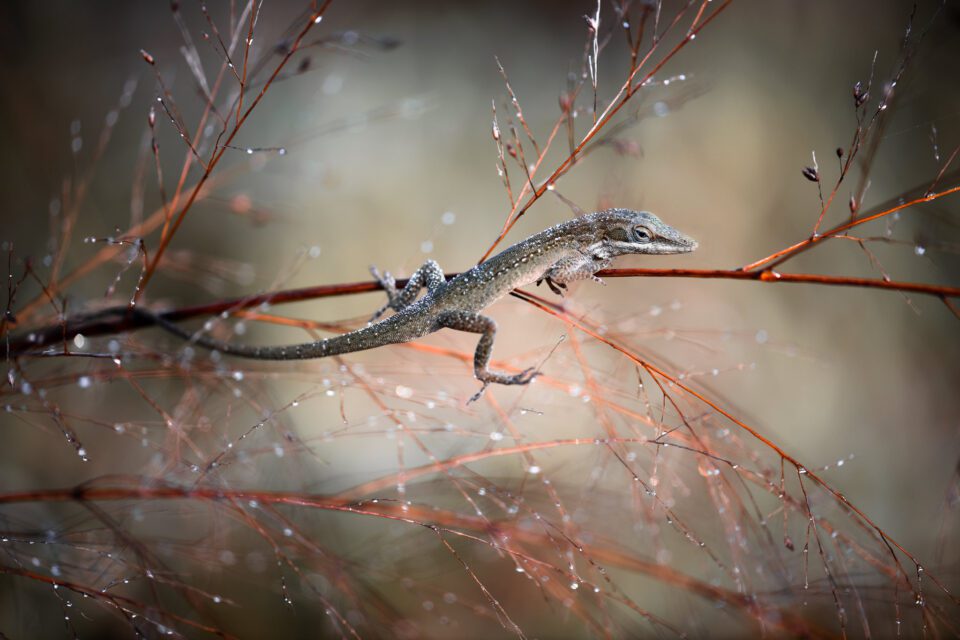
This introduction to photography is written for beginners, with several tips and suggestions to take your skills every bit far equally possible. However, writing an introduction to photography is similar writing an introduction to words; equally amazing and important as it is, photography tin be almost limitlessly complex. What separates inspiring photographs from ordinary ones, and how can you meliorate the quality of your ain piece of work? This article lays a foundation to respond to those questions and more.
Tabular array of Contents
What Is Photography?
Photography is the art of capturing light with a camera, commonly via a digital sensor or motion-picture show, to create an image. With the correct camera equipment, you can even photograph wavelengths of light invisible to the human eye, including UV, infrared, and radio.
The outset permanent photo was captured in 1826 (some sources say 1827) by Joseph Nicéphore Niépce in France. It shows the roof of a building lit by the sun. You can see it reproduced below:
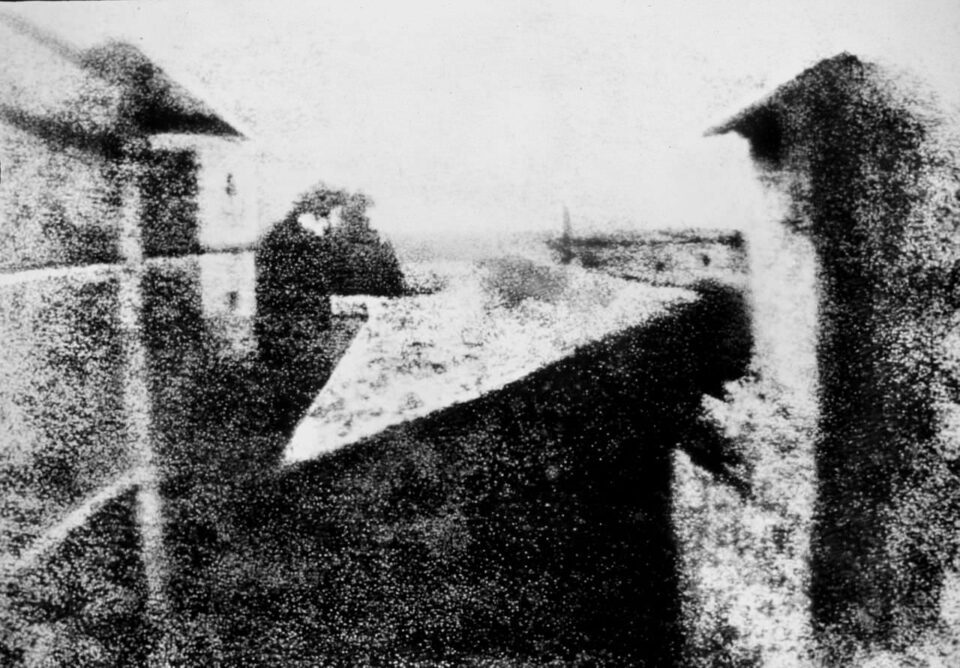
We've come up a long way since then.

The purpose of this article is to innovate the past and nowadays worlds of photography. You volition also find some important tips to assistance y'all take better photos along the fashion.
A Cursory History of Photography and the People Who Made Information technology Succeed
Color photography started to become pop and accessible with the release of Eastman Kodak's "Kodachrome" moving-picture show in the 1930s. Earlier that, nigh all photos were monochromatic – although a handful of photographers, toeing the line between chemists and alchemists, had been using specialized techniques to capture color images for decades before. You'll find some fascinating galleries of photos from the 1800s or early 1900s captured in full color, worth exploring if you lot accept not seen them already.
These scientist-magicians, the first color photographers, are hardly alone in pushing the boundaries of one of the world'due south newest art forms. The history of photography has always been a history of people – artists and inventors who steered the field into the modernistic era.
So, beneath, you'll find a brief introduction to some of photography's nigh important names. Their discoveries, creations, ideas, and photographs shape our own pictures to this mean solar day, subtly or non. Although this is just a cursory bird'southward-eye view, these nonetheless are people y'all should know before you lot step into the technical side of photography:
Joseph Nicéphore Niépce
- Invention: The first permanent photo ("View from the Window at Le Gras," shown earlier)
- Where: France, 1826
- Bear upon: Cameras had already existed for centuries before this, simply they had one major flaw: You couldn't record a photograph with them! They simply projected calorie-free onto a separate surface – one which artists used to create realistic paintings, just not strictly photographs. Niépce solved this trouble by coating a pewter plate with, essentially, cobblestone, which grew harder when exposed to light. By washing the plate with lavander oil, he was able to fix the hardened substance permanently to the plate.
- Quote: "The discovery I have fabricated, and which I call Heliography, consists in reproducing spontaneously, by the action of light, with gradations of tints from black to white, the images received in the camera obscura." Mic drop.
Louis Daguerre
- Invention: The Daguerreotype (showtime commercial photographic material)
- Where: France, 1839
- Impact: Daguerreotypes are images fixed direct to a heavily polished sheet of silver-plated copper. This invention is what really made photography a applied reality – although information technology was still merely an expensive marvel to many people at this point. The first fourth dimension you see a daguerreotype in person, you may be surprised merely how sharp information technology is.
- Quote: "I have seized the lite. I have arrested its flight."
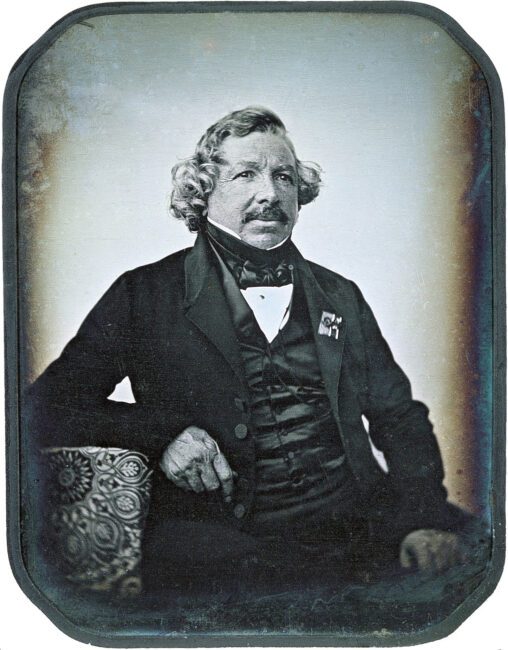
Alfred Stieglitz
- Genre: Portraiture and documentary
- Where: United States, tardily 1800s through mid 1900s
- Bear on: Alfred Stieglitz was a photographer, but, more importantly, he was i of the get-go influential members of the fine art community to take photography seriously as a creative medium. He believed that photographs could express the creative person's vision just as well every bit paintings or music – in other words, that photographers could be artists. Today'southward perception of photography as an fine art form owes a lot to Stieglitz.
- Quote: "In photography, at that place is a reality so subtle that information technology becomes more real than reality."
Dorothea Lange
- Genre: Portrait photography
- Where: The states, 1930s
- Bear on: One of the most prominent documentary photographers in history, and the photographer backside ane of the most influential images of all time (shown below), is Dorothea Lange. If you've always seen photos from the Great Depression, you lot've seen some of her piece of work. Her photos shaped the field of documentary photography and showed the camera's potential for telling powerful stories perhaps more than anyone else.
- Quote: "The photographic camera is an instrument that teaches people how to see without a photographic camera."
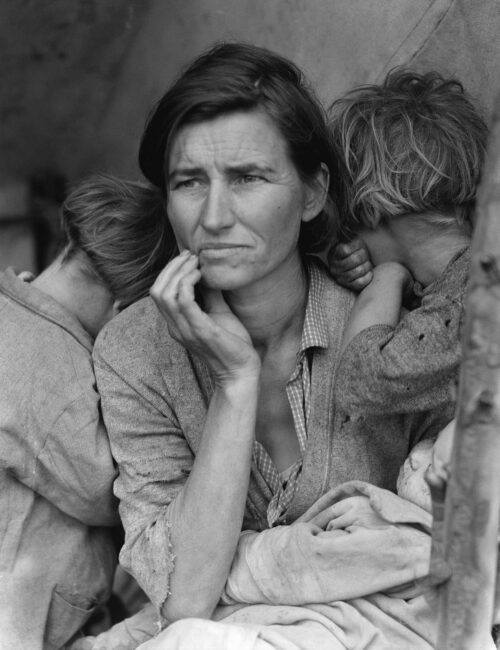
Ansel Adams
- Genre: Landscape photography
- Where: United states
- When: 1920s to 1960s (for most of his piece of work)
- Touch: Ansel Adams is perhaps the nigh famous photographer in history, which is remarkable because he mainly took pictures of landscapes and natural scenes. (Typically, famous photographers have tended to photograph people instead.) Ansel Adams helped conductor in an era of realism in landscape photography, and he was an early champion of the environmentalism and preservation movements in the U.s..
- Quote: "There is aught worse than a sharp image of a fuzzy concept."
Do You Demand a Fancy Camera?
Apple became the world's outset trillion dollar company in 2018 largely because of the iPhone – and what it replaced.
Warning clocks. Flashlights. Calculators. MP3 players. Landline phones. GPSs. Audio recorders.
Cameras.
Many people today believe that their phone is good enough for well-nigh photography, and they take no need to buy a separate camera. And you know what? They're not incorrect. For nigh people out in that location, a dedicated camera is overkill.
Phones are ameliorate than dedicated cameras for most people's needs. They're quicker and easier to use, not to mention their seamless integration with social media. Information technology only makes sense to get a dedicated camera if your phone isn't good plenty for the photos you desire (like photographing sports or low-low-cal environments) or if you're specifically interested in photography every bit a hobby.
That advice may sound crazy coming from a lensman, simply it's true. If you have any camera at all, particularly a prison cell phone photographic camera, you have what yous need for photography. And if you accept a more advanced camera, like a DSLR or mirrorless photographic camera, what more is in that location to say? Your tools are upwards to the claiming. All that's left is to learn how to use them.-
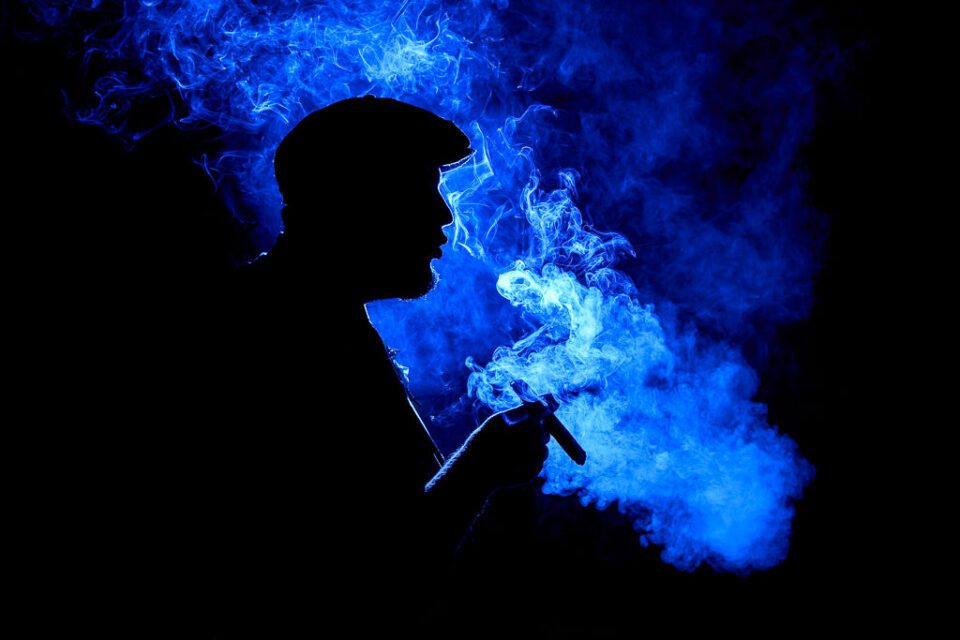
What Is the Blank Minimum Gear Needed for Photography?
Camera. If y'all buy a dedicated photographic camera (rather than a phone), pick one with interchangeable lenses so that you can try out unlike types of photography more hands. Read reviews, merely don't obsess over them, because everything available today is pretty much equally good equally its competition. Discover a squeamish deal and move on.
Lenses. This is where it counts. For everyday photography, start with a standard zoom lens like a 24-70mm or 18-55mm. For portrait photography, pick a prime lens (one that doesn't zoom) at 35mm, 50mm, or 85mm. For sports, go with a telephoto lens. For macro photography, get a dedicated macro lens. And and so on. Lenses matter more than any other piece of equipment considering they determine what photos you tin can take in the first place.
Mail service-processing software. One style or another, y'all need to edit your photos. It's ok to starting time with software already on your reckoner, or software that comes with your camera. Merely in the long run, a defended programme will do a better task. Adobe sells Lightroom and Photoshop equally a package for $10/calendar month, or you lot tin can purchase standalone software from another company if you adopt; there are tons of options. Whatever you option, stick with it for a while, and you lot'll learn it quite well.
Everything else is optional, but tin can be very helpful:
- A tripod. A landscape lensman'due south best friend. See our comprehensive tripod article.
- Numberless. Go a shoulder bag for street photography, a rolling bag for studio photography, a technical hiking backpack for mural photography, so on.
- Retentiveness cards. Choose something in the 64-128 GB range to beginning. Get a fast card (measured in MB/2d) if you shoot bursts of photos, since your photographic camera's retention volition clear faster.
- Extra batteries. Get at least one spare battery to start, preferably 2. Off-brand batteries are unremarkably cheaper, although they may not terminal equally long or maintain compatibility with futurity cameras.
- Polarizing filter. This is a big one, specially for landscape photographers. Don't get a cheap polarizer or it will impairment your image quality. We recommend the B+Westward Kaesemann filter (of the aforementioned thread size as your lens). Run across our polarizing filter article besides.
- Flash. Flashes tin can be expensive, and y'all might need to buy a split transmitter and receiver if you want to apply your flash off-photographic camera. Simply for genres similar portrait photography or macro photography, they're indispensable.
- Better figurer monitor. Ideally, y'all'd go an IPS monitor for editing photos (which we've likewise written an article near). A colour calibration device is as well really helpful, so you know y'all're editing the "correct" colors.
- Cleaning kit. The peak particular is a microfiber cloth to continue the forepart of your lens clean. Also get a rocket blower to remove grit from your camera sensor more easily.
- Other equipment. There are endless other photography accessories available, from remote shutter releases to GPS attachments, printers, and more. Don't worry about these at first; you lot'll realize over time if yous demand one.
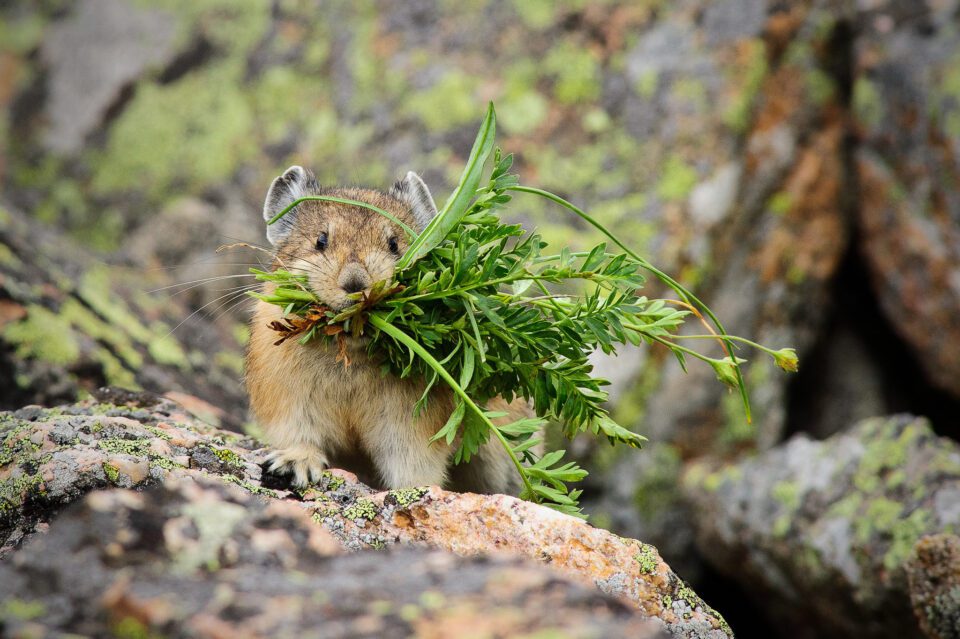
The Three Primal Photographic camera Settings You Should Know
Your camera has dozens of buttons and menu options, if not hundreds. How exercise you make sense of all these options? And how practise you practice it quickly in the field?
It's not like shooting fish in a barrel, but it's also not every bit bad you might retrieve. In fact, most of the menu options are things you'll only set 1 time, then rarely or never touch again. Just a handful of settings need to exist changed often, and that'due south what the balance of this Photography Basics guide covers.
The iii most important settings are chosen shutter speed, aperture, and ISO. All iii of them control the brightness of your photograph, although they do so in dissimilar means. In other words, each brings its ain "side effects" to an epitome. And so, it'south a bit of an art to know exactly how to balance all 3 for a given photo.
- Shutter speed: The amount of time your camera sensor is exposed to the outside world while taking a picture. Chapter 2: Shutter Speed
- Aperture: Represents a "pupil" in your lens that can open up and close to permit in dissimilar amounts of lite. Chapter iii: Discontinuity
- ISO: Technically a bit more than complex backside the scenes, but similar to the sensitivity of film for taking pictures in unlike lighting conditions. Also similar to brightening or darkening a photo in mail-processing. Chapter 4: ISO

Photography FAQ
This multi-chapter guide goes into a lot more detail nigh taking good photos, merely you may detect that some of your biggest questions can be answered more speedily. Here's a quick photography FAQ with some questions we hear all the time:
What is the purpose of photography?
The purpose of photography tin vary depending on what the photographer is trying to achieve. For example, documentary and news photographers capture images for the purpose of providing detailed account of actual events, while hobbyist photographers aim to capture life moments with their families and friends.
What are the types of photography?
At that place are many unlike types of photography, such as mural, macro, wildlife, portrait, documentary, manner, travel and event photography. To see a more than complete list of types of photography, delight refer to this article.
What do you need for photography?
To starting time taking pictures, all you need is a photographic camera, which can be anything from a basic smartphone to an avant-garde DSLR or a mirrorless photographic camera. Even so, photography equipment is not all that important – light, discipline, emotion and composition are all critical elements of a successful photograph.
What is the most common type of photography?
In that location are a number of photography genres that are very popular today. These include portrait, landscape, compages, style, food, sports, wild fauna, macro, street, outcome and documentary photography.
What equipment do I need every bit a beginner lensman?
If you are merely starting out in photography, all you need is a photographic camera that you are comfortable with. The balance of photography equipment is going to exist based on your needs. For instance, if you desire to exercise landscape photography, you will demand a number of dissimilar lenses, a tripod and filters. For portrait photography, you will demand to invest in a good portrait lens and potentially some lighting equipment.
What is the oldest photograph?
The oldest photograph, "View from the Window at Le Gras", was captured by Joseph Nicéphore Niépce in 1826 or 1827.
Who took the first selfie?
The first photographic portrait always taken was a self-portrait, or a "selfie". It was captured in 1839 by Robert Cornelius, an amateur chemist and photography enthusiast from Philadelphia.
What is a genre in photography?
A photography "genre" is a type of photography, such as landscape photography, portrait photography, wildlife photography, etc.
How tin I larn photography?
Y'all tin learn photography from many books and online resources. A lot of information related to photography can exist obtained for free in the forms of articles and videos. This article is a part of photography basics series, which is provided by Photography Life for complimentary to everyone.
What makes a great photograph?
A slap-up photograph should have good low-cal, subject, and limerick – the three elements that matter the virtually in photography. The photographer should accept a strong vision, then express it in the nearly effective way possible, as explained in this article.
What is the best type of photography?
Every photography genre has its own appeal. Some people similar some genres of photography more than others.
The Start Steps on Your Photographic Journeying
In photography, the technical and the creative go manus in hand.
Think the Ansel Adams quote from before? "At that place is naught worse than a sharp epitome of a fuzzy concept." If the idea behind a photo is weak, using the correct photographic camera settings won't make information technology better.
At the same time, camera settings still matter. In a manner, every technical option is really an creative choice in disguise. These settings are worth learning. Your understanding of photography will better tenfold when you understand how camera settings work.
Then, the side by side few chapters of this guide volition cover the most of import photographic camera settings: shutter speed, aperture, and ISO. And so, we'll dive into the deep end of limerick. This is how photos are made.
Source: https://photographylife.com/what-is-photography
0 Response to "Summer Looks for Family Pictures 2018 Outdoor Photography"
Enregistrer un commentaire